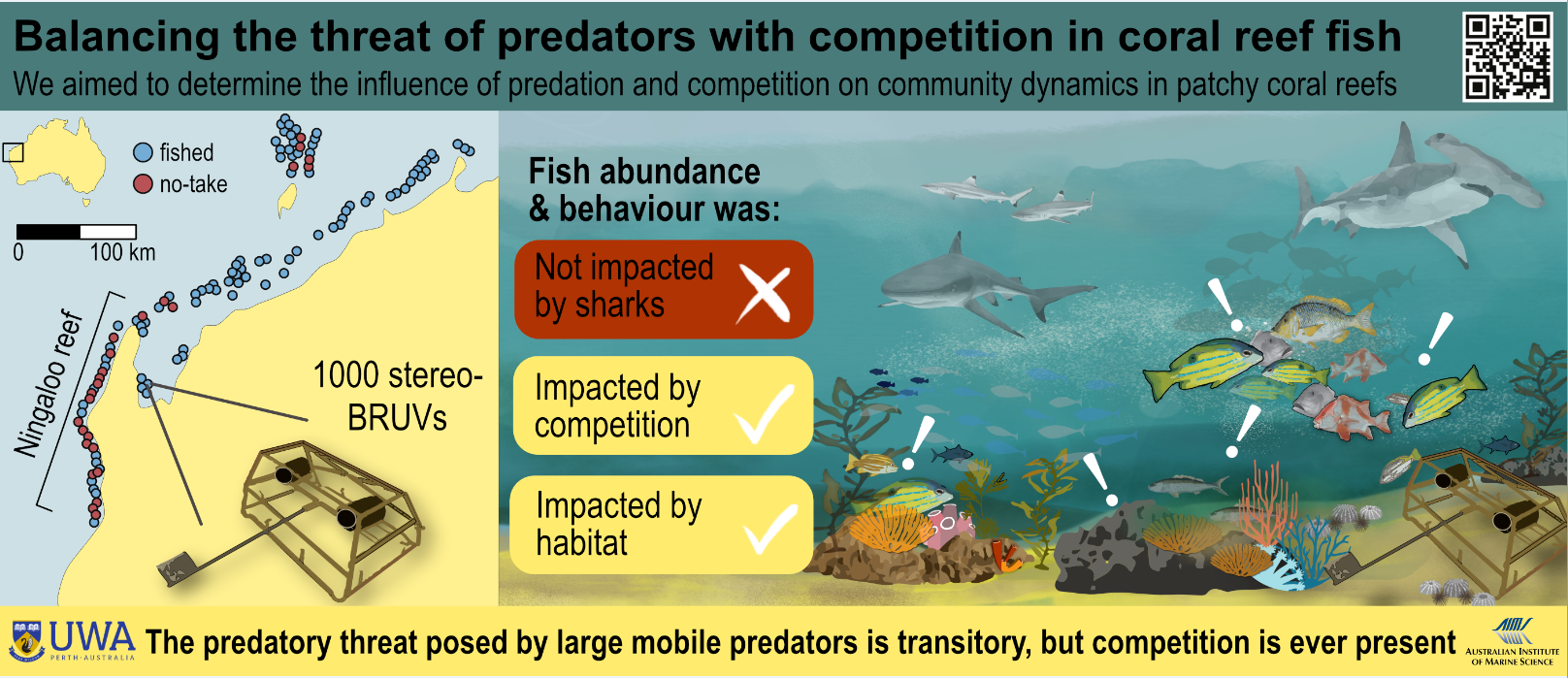
Research
The ecological role of predators in coral reefs
My research uses innovative experimental techniques, including life-size models of predators, and traditional techniques applied in novel experimental settings to investigate the mechanisms by which reef sharks can alter the behaviour of coral reef communities. Since reef sharks are unamenable to captivity, these experiments can provide us a rare insight into interactions between reef sharks and other reef fishes. We have recently expanded this approach to compare the relative threats posed by an approaching reef shark and an approaching human, both of which are large-bodied predators in coral reef ecosystems.
Insights from large-scale natural experiments
Interactions between predators and their prey unfold in patchy and dynamic environments, and this level of complexity cannot be captured in small-scale experiments. To overcome this limitation, my research uses gradients in predator abundances as large-scale “natural experiments”. This allows my studies to sample multiple species and size classes of predators that are not amenable to captive experiments, across a range of habitats.
Anthropogenic threats
My research also focuses on quantifying the anthropogenic threats facing marine communities. Much of my work has focused on the threat of boat strike to marine megafauna, such as whale sharks. Currently I am working with a network of scientists, marine park managers, and citizen scientists to identify the lethal and sublethal impacts of collisions with ships to whale shark aggregations. This includes identification of scarring rates over time, measuring growth rates and the body condition of scarred individuals and communicating this research to stakeholders and the interested public.
Harnessing technology to understand animal behaviour
Advances in technology are providing us with an unprecedented insight into the lives of animals and ecological processes that are difficult to observe. It is an exciting time to be an ecologist! Predation is a rare occurrence, meaning the outcome of predator-prey interactions can be hard to observe and understand. I use technology such as Baited Remote Underwater Video, Diver Operated Video and remote sensing to quantify interactions between predators and their prey.



